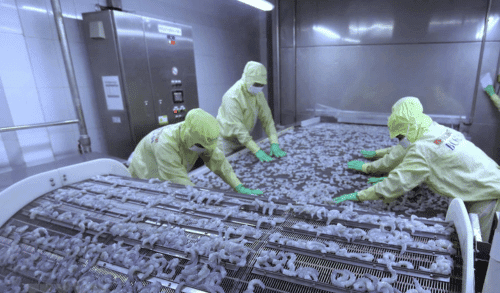Table of Contents
ToggleImpact of Increasing Production Costs
The competitiveness of Vietnamese seafood products is being affected by rising production costs, including feed prices, material input, electricity, and labor. Experts point out that these escalating expenses are putting pressure on seafood producers and impacting their production and selling prices.

Electricity Price Hike and its Consequences
The Ministry of Industry and Trade (MoIT) reported an 8.36% increase in the average retail price of power last week. This translates to a rise in electricity bills from 1,720 VND (7.49 US cents) per kWh to 1,864 VND (8.03 cents) per kWh (excluding VAT). The higher electricity tariffs have raised concerns among tra fish producers, as increased input costs are expected to affect their production and ultimately the selling prices.
Challenges Faced by Seafood Processing Enterprises
Seafood processing enterprises, particularly those involved in export-oriented production, heavily rely on freezers and air conditioning systems, which account for over 85% of their total power consumption. For example, a medium-capacity tra fish processing factory in Dong Thap province typically pays 10 billion VND for electricity per month. With the recent power price increase, factories will face significantly higher expenses.
Calls for Reasonable Policies and Support
The tra fish industry has suggested that the electricity sector consider and implement reasonable policies that create favorable conditions for production, particularly in the agricultural and fishery sectors. One proposed approach is to increase electricity prices gradually, with an initial surge rate of 3-4%, followed by suitable adjustments. Furthermore, enterprises urge the government to offer preferential loans to support the conversion of outdated electrical equipment to new, energy-efficient machines. Promoting the use of renewable energy resources is also seen as a viable solution.
Labor Costs and Difficulties in Recruitment
Seafood processing enterprises are facing challenges in finding workers, especially in Ho Chi Minh City and the Mekong Delta region. Despite increasing salaries to attract workers, enterprises are still struggling with labor shortages. Unstable incomes and hazardous working environments have prompted many workers to switch jobs. These difficulties in labor recruitment contribute to rising labor costs for seafood processing businesses.
Feed and Antibiotic Costs
The cost of feed in Vietnam’s shrimp industry is higher compared to neighboring countries. Shrimp production costs in Vietnam are approximately 1 USD per kilogram higher than in neighboring countries. Additionally, the cost of antibiotics poses a significant financial burden on the domestic shrimp industry. The price of raw shrimp itself presents a major challenge for seafood processing enterprises due to unstable supplies caused by reductions in fishery resources and severe weather conditions.
Investments in Large-scale Material Regions
To mitigate production costs and ensure quality and hygiene control, large seafood producers have been actively developing large-scale material regions. These regions have higher capacities and allow for cost reductions. For example, companies like Minh Phu Seafood Corporation and Sao Ta Food Joint Stock Company have invested in expanding their shrimp farming areas to increase supply. Vinh Hoan JSC plans to expand its tra fish farming area, while Nam Viet Joint Stock Company is constructing a high-tech tra fish farming region to meet processing capacity targets. In conclusion, rising production costs in the Vietnamese seafood industry, including electricity, feed, labor, and material inputs, are presenting challenges for enterprises. The recent increase in electricity prices has led to concerns about the impact on production and selling prices. To address these challenges, the industry suggests reasonable policies, support for the adoption of renewable energy, preferential loans for upgrading equipment, and efforts to stabilize labor recruitment. Investments in large-scale material regions are also being made to reduce costs and ensure a steady supply of raw materials.




















